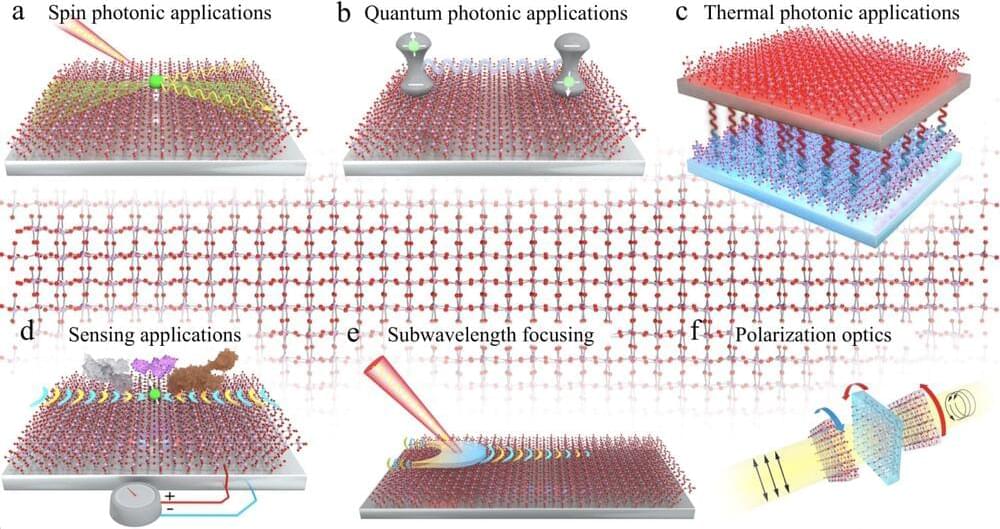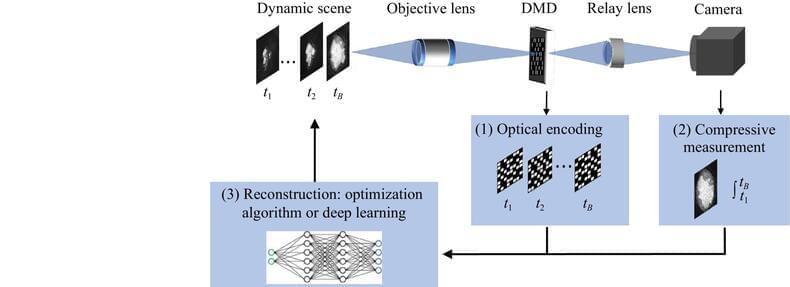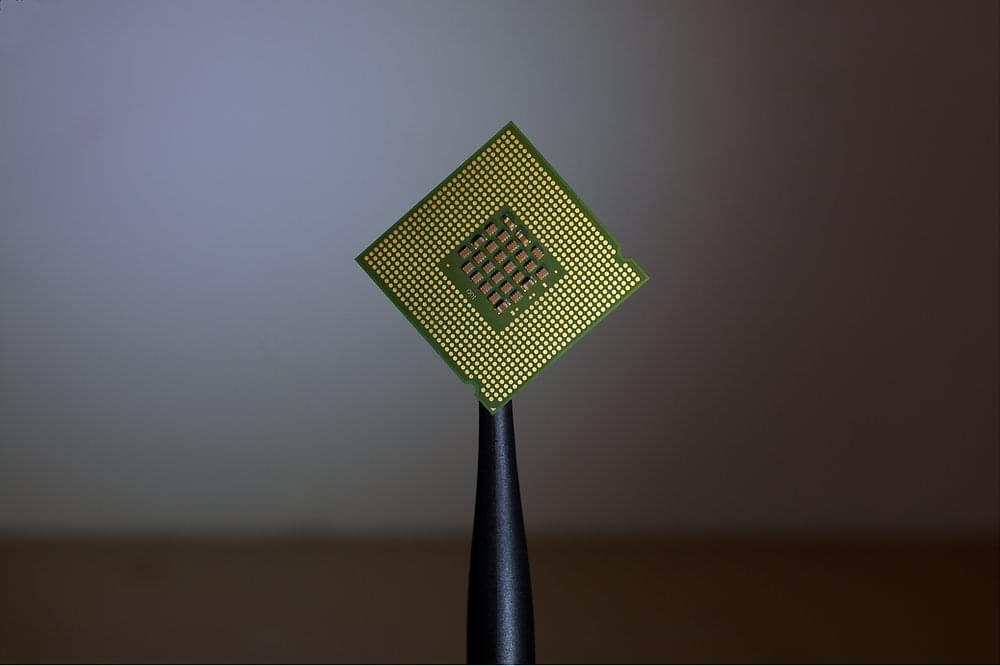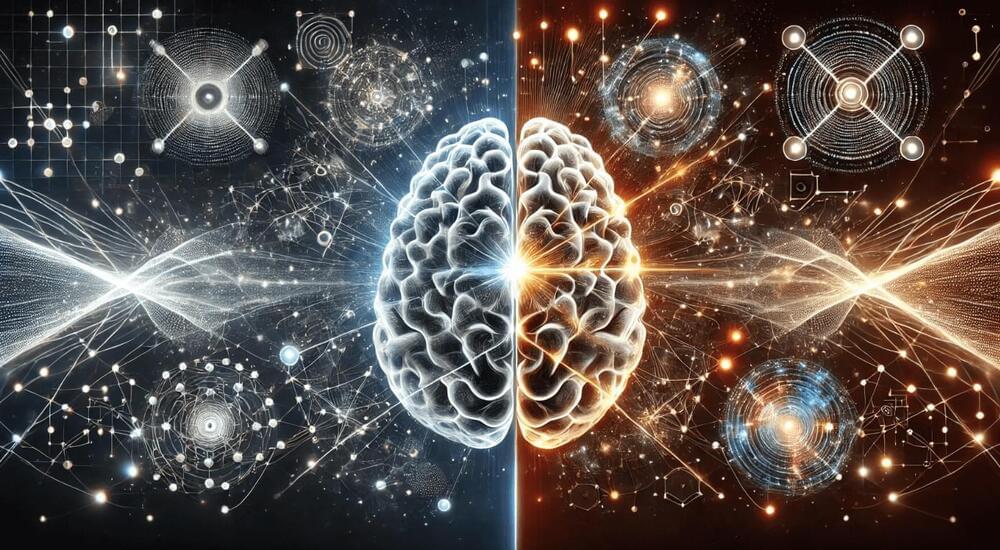Neuralink assists second person ‘control cursor with mind’
Category: computing – Page 186

Neuralink’s first patient says he’s named his brain-implant device and is using it to learn French and Japanese
Neuralink’s first patient says he’s given his brain-chip implant a name seven months after it was surgically implanted.
Noland Arbaugh, who is quadriplegic and became the first person to get the computer-controlling implant developed by Elon Musk’s brain-interface company, said Wednesday that he had named the device “Eve” and was working with it to improve himself in different ways.

Manipulation of nanolight provides new insight for quantum computing and thermal management
A recent study led by University of Minnesota Twin Cities researchers provides fundamental insight into how light, electrons, and crystal vibrations interact in materials. The research has implications for developing on-chip architectures for quantum information processing, significantly reducing fabrication constraints, and thermal management.

A 3D Ion Magnet: Unlocking the Third Dimension in Quantum Computing
Researchers have engineered a new technique to trap ions in 3D structures using modified electric fields in Penning traps, forming stable bilayer crystals.
This innovation paves the way for more complex quantum devices and could revolutionize quantum computing and sensing by utilizing space more efficiently.
Quantum Device Challenges
Fusion’s New Hero: The Liquid Metal That Beats the Heat
Scientists at the Princeton Plasma Physics Laboratory are pioneering the use of liquid lithium in spherical tokamaks to enhance fusion performance.
Recent computer simulations suggest the optimal placement of lithium vapor to protect the tokamak’s interior from intense plasma heat. Innovative configurations, such as the lithium “cave” and porous plasma-facing walls, aim to simplify the design and improve heat dissipation, contributing to the future of fusion energy.
Inside the next generation of fusion vessels known as spherical tokamaks, scientists at the U.S. Department of Energy’s Princeton Plasma Physics Laboratory (PPPL) envisioned a hot region with flowing liquid metal that is reminiscent of a subterranean cave. Researchers say evaporating liquid metal could protect the inside of the tokamak from the intense heat of the plasma. It’s an idea that dates back several decades and is tied to one of the Lab’s strengths: working with liquid metals.

Computational imaging empowers laser material processing with snapshot compressive microscopy
A team of researchers has developed a novel computational imaging system designed to address the challenges of real-time monitoring in ultrafast laser material processing. The new system, known as Dual-Path Snapshot Compressive Microscopy (DP-SCM), represents a significant advancement in the field, offering unprecedented capabilities for high-speed, high-resolution imaging. The team was led by Yuan Xin from Westlake University and Shi Liping from Xidian University.


Microwave Control of the Tin-Vacancy Spin Qubit in Diamond with a Superconducting Waveguide
The tin-vacancy center in diamond has properties that could be useful for quantum networks.
In a new study, researchers show how this defect’s electron spin can be controlled — and coherence prolonged — using a superconducting microwave waveguide.
Even the most pristine diamonds can host defects arising from missing atoms (vacancies) or naturally occurring impurities. These defects possess atomlike properties such as charge and spin, which can be accessed optically or magnetically. Over the past few decades, researchers have studied various defects to understand and harness these properties. One in particular—the tin-vacancy center, in which a tin atom resides on an interstitial site with two neighboring vacancies—exhibits exceptionally useful optical and spin properties, making it highly relevant in the field of quantum communication. Here, we explore how the spin properties behave under different magnetic field directions.
We demonstrate that manipulating electron spins is more straightforward in strained diamonds, as the electron spin is more responsive to an alternating magnetic field. We use superconductors known for generating no heat when a current flows through them, ensuring that we do not negatively affect the spin properties.
Through our simple fabrication steps, we illustrate how the properties of the tin-vacancy center can be fully utilized to advance the field of quantum computing and communication.

Mind-Reading chip turns thoughts into text — A game changer
Researchers at the École Polytechnique Fédérale de Lausanne (EPFL) have developed a revolutionary miniaturized brain-machine interface (MiBMI) that converts brain activity directly into text. This breakthrough technology, housed on silicon chips with a total area of just 8mm², marks a significant advancement in brain-computer interface technology.
The study, published in the IEEE Journal of Solid-State Circuits and presented at the International Solid-State Circuits Conference, highlights a device that could dramatically improve communication for individuals with severe motor impairments.

D-Wave’s Quantum Computer Serves as Brains Behind Study That Connects Neural Activity to Academic Performance
The study, published by a multi-institutional team of researchers…
Researchers used D-Wave’s quantum computing technology to explore the relationship between prefrontal brain activity and academic achievement, particularly focusing on the College Scholastic Ability Test (CSAT) scores in South Korea.
The study, published by a multi-institutional team of researchers across Korea in Scientific Reports, relied on functional near-infrared spectroscopy (fNIRS) to measure brain signals during various cognitive tasks and then applied a quantum annealing algorithm to identify patterns correlating with higher academic performance.
The team identified several cognitive tasks that might boost CSAT score — and that could have significant implications for educational strategies and cognitive neuroscience. The use of a quantum computer as a partner in the research process could also be a step towards practical applications of quantum computing in neuroimaging and cognitive assessment.